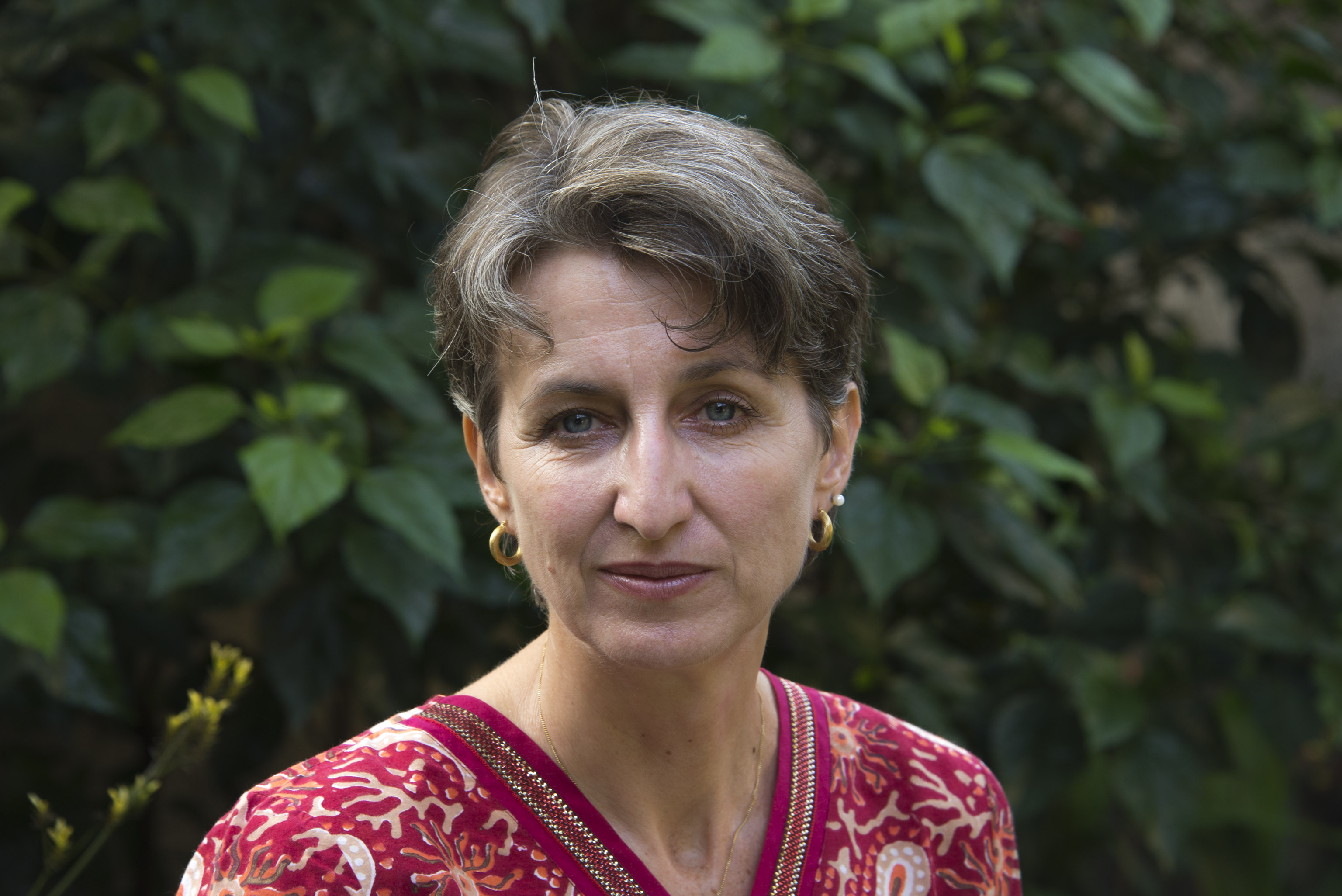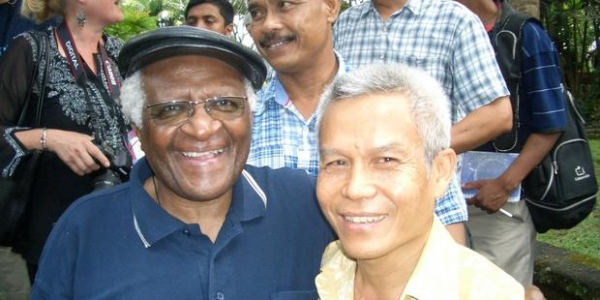Anne-Sophie Gindroz, an aid worker who was expelled by the Communist government of Laos in late 2012, has just written a book on her experience in that country. “Laos, the silent repression” (see attachment download above) comes five years after the disappearance of Laotian activist Sombath Somphone. The Laotian government has still not provided any information on his fate, despite international pressure.
Gindroz worked for the Swiss NGO Helvetas in Laos for three years. Shortly before her expulsion, she had been a member of the organizing committee of the Asia-Europe People Forum, a forum of civil society organizations which took place in the Laotian capital Vientiane to coincide with an Asia-Europe summit of heads of State and government. A week after her expulsion, Sombath Somphone was arrested by the Laotian police. He was founder of the Laotian NGO Participatory Development Training Center (PADETC), which works for education in rural areas, and was also on the organizing committee of the People Forum. He has not been heard of since. Author Anne-Sophie Gindroz spoke to Justice Info.
Justice Info: You worked for several years in Laos for a humanitarian organization, and then, at the end of 2012, you were expelled. What happened?
Anne-Sophie Gindroz: I was managing a Swiss organization called Helvetas. We were working in the field of rural development and organic agriculture. Some farmers’ groups that we were supporting had lost their land because of development, infrastructure or large investment projects. This led me to study land rights issues, as well as issues of civil society and of respect for fundamental rights in Laos…

It seems the organization of the Asia Europe People Forum in Vientiane at the end of 2012 was a key event?
Yes. The Asia-Europe People Forum was organized for the first time in Laos along with the Asia Europe summit of heads of State and government (ASEM). Laos wanted to be more visible internationally, so Laotian leaders were more or less compelled to accept that this People Forum be organized ahead of ASEM. The forum opened the opportunity to discuss all these issues that I have mentioned in a large gathering of organizations from the Mekong region, from Asia and from Europe. Of course, it was organized jointly with the Laotian government, because it was unthinkable to organize something only with civil society. But at the same time, we felt that there was a space for negotiation in order to make progress on these issues with a more open dialogue. I was on the organizing committee with Sombath Somphone. When we were preparing the forum, we had to negotiate constantly (with the Lao authorities), but we had the feeling that we could bring the Lao government to work more closely with Lao civil society organizations and to discuss these sensitive issues.
Where did things go wrong?
We certainly underestimated the role played by other centres of power. We were mostly interacting with the Ministry of Foreign affairs, because it was an international forum, but there were also the security agencies, the (Communist) party apparatus and the Politburo, which were worried to see the potential of civil society. Indeed, there was suddenly an influx of more or less activist organizations in Vientiane coming to discuss issues which generally speaking were not openly debated in Laos. It raised alarm for the most conservative elements of the regime. They thought we don’t want this on our soil. And they chose to send a very clear message, first with my expulsion -- because I was spokeswoman for the international organizations -- and then, at the level of the Laotian civil society, by targeting Sombath Somphone. It was a very, very strong message, because Sombath is the most respected person at the level of Laotian civil society, he is a charismatic person and a real leader for the communities.
Is it the disappearance of Sombath Somphone which motivated you to write this book?
Yes. When I was expelled, I still had a lot of hope, because it seemed that things were moving, that we would not backtrack. During my last 48 hours in Laos, I received very strong testimonies of support. I was hopeful that things would continue on the same line and that my expulsion was a kind of bump in the road. So, when Sombath was arrested a week later and then was disappeared, it was really an enormous shock. It broke so many things. It is what motivated me to be a witness, because the strategy used is the same as the one used by all authoritarian regimes: repression by fear. And it worked very well, because silence was imposed. It seemed to me that the best reaction to this was to speak out and to bear testimony.
It is now five years since Sombath Somphone disappeared. What has been the attitude of the Laotian authorities on his case?
The Laotian authorities have always said the same thing. They deny any involvement with the arrest and the disappearance, which is denying the obvious, because we have the images of Sombath’s arrest – images recorded by a surveillance camera. In the week following his disappearance nobody contested the fact that it was indeed Sombath on those images, that it was his car that was stopped (at a police checkpoint), that it was Sombath who was taken away in a pick-up truck and disappeared. But, little by little, the Laotian authorities tried to erase all connections between the disappearance of Sombath and the images recorded by the surveillance camera. They began to say they were not sure it was him, that it could be someone else. At the same time, they claimed that an investigation was under way, that it was still ongoing, but rejected offers of international assistance aimed at helping to analyze the pictures to identify the cars’ registration numbers and persons involved. They even blocked access to the images.
Do you think donor countries have exerted sufficient pressure on the case?
The mobilization on this case was unprecedented, because there had never before been any international reaction on previous abuses in Laos. But it was also a weak reaction in the sense that it had no effect on the level of assistance to the Laotian regime. There have been no sanctions. Sombath’s case is always on the agenda, for instance, of the Human Rights dialogue between Laos and the European Union. The case is mentioned, but EU representatives seem satisfied with bogus replies (from the Laotian government).
When you were working in Laos, what struck you most in terms of social justice and human rights?
What is striking in Laos is that it is very easy to completely ignore all these issues. Laotians are adorable people, always smiling. They will never – also because of security reasons – tell you spontaneously about land grabbing issues, issues linked to restrictions on freedom of association or demonstrations, or even tell you about the repression, which is not very visible but is nevertheless real. It is a very deceiving picture, because Laos is a beautiful country exuding social harmony and serenity. But when we dig a little deeper, there is a very dark side about which almost nothing is said, because there are no human rights organizations working in Laos. The local organizations are not authorized to deal with these issues, and big international organizations like Amnesty International and Human Rights Watch have no access.
When you were working in Laos, what did you think about the attitude of the donor countries and international organizations on these issues of social justice and human rights?
I tried to mobilize on these issues at the level of diplomatic delegations, at the level of international organizations and large multilateral and bilateral aid agencies. I was telling them that, yes, the context is complicated, these issues are sensitive, there are risks, but these risks are much higher for the local organizations trying to deal with these issues than for expatriates working in Laos. For me, it was clear that our role was to try and expand the space a bit, so that it would then allow local organizations to deal with these issues. But I have been disappointed. It is true that in that period the international community was more focused on neighboring countries, particularly on Myanmar, where there was more information available about what was going on, even in the darkest years of the military junta. In Myanmar, there was an underground civil society connected to the outside world, so we knew what the problems were. In Laos, it is totally different. There were no such organizations and, consequently, there was not the same kind of pressure on the international community representatives working in Laos to take a clear stand on human rights issues.



